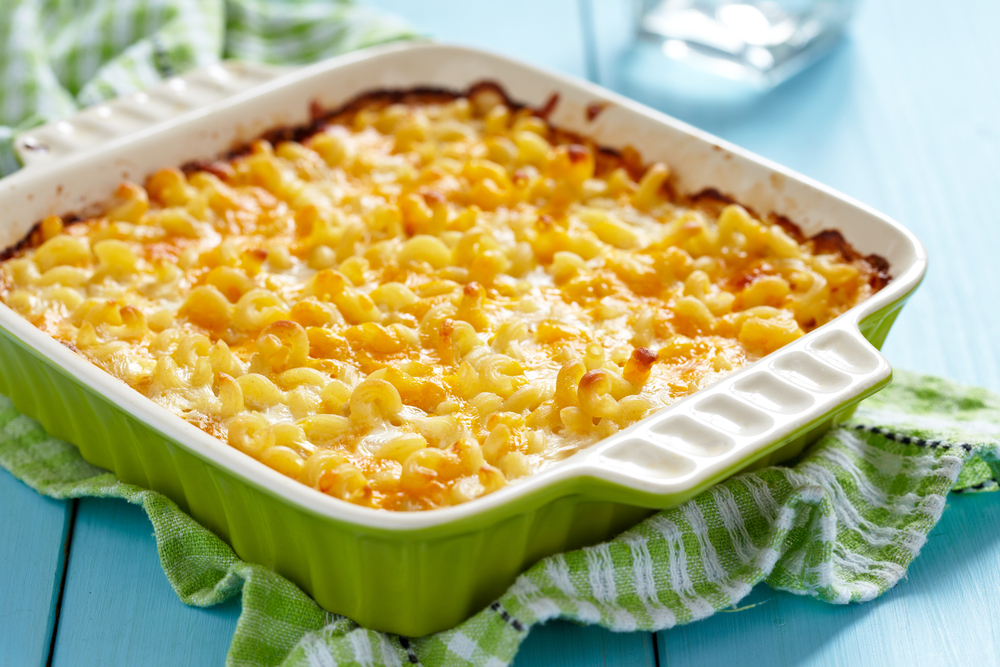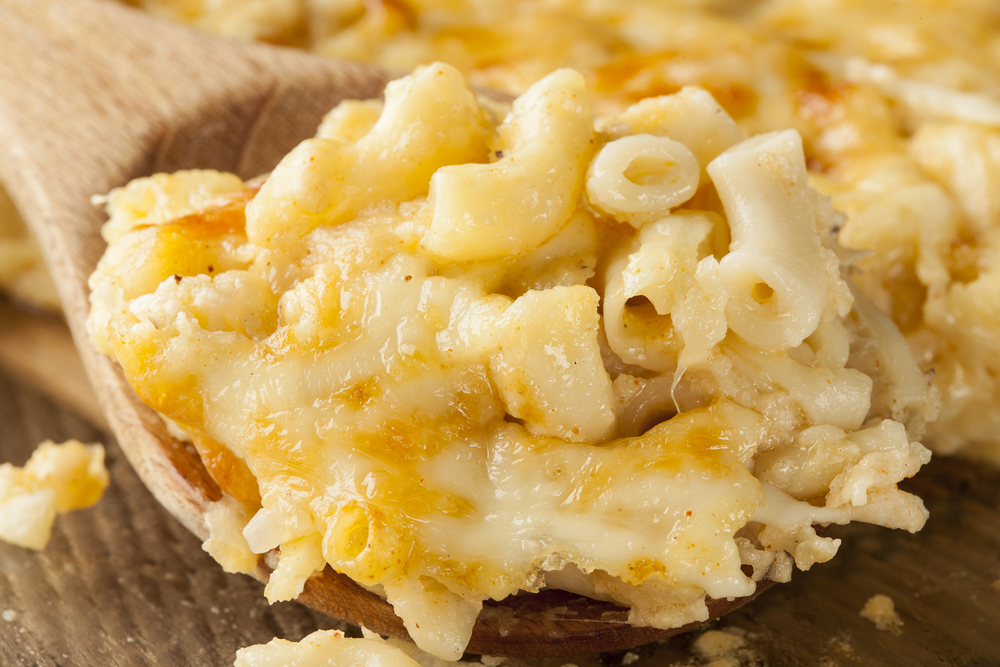Pizza is a beloved food worldwide, and it is essential to ensure that it is stored and served at the correct temperature to avoid foodborne illness.
The minimum hot holding temperature for pizza is a crucial aspect of food safety that every pizza maker should be aware of.
Hot holding temperature refers to the temperature at which cooked food must be kept to prevent bacterial growth and ensure food safety.
The minimum hot holding temperature for pizza is 135°F (57°C) to ensure that the cheese is melted and safe to eat. Toppings like vegetables and meats must be cooked and stored at safe temperatures below 40°F (4°C) until used on the pizza.
If pizza is not held at the correct temperature, it can become a breeding ground for bacteria, which can cause food poisoning and other health problems. It is important to know the minimum hot holding temperature for pizza to ensure that it is safe to eat and maintain its quality.
Key Takeaways
- The minimum hot holding temperature for pizza is 135°F (57°C) to ensure that the cheese is melted and safe to eat.
- Toppings like vegetables and meats must be cooked and stored at safe temperatures below 40°F (4°C) until used on the pizza.
- Proper temperature regulation is crucial to prevent bacterial growth and ensure food safety when storing and serving pizza.
Understanding Hot Holding Temperature

When it comes to serving hot pizza, it is crucial to maintain the correct temperature to ensure that the food is safe to eat. Hot holding temperature refers to the temperature at which food is kept after it has been cooked and is ready to be served.
The minimum hot holding temperature for pizza is 135°F (57°C). This temperature ensures that any potential bacteria or pathogens are killed, providing a safe and enjoyable dining experience.
It is important to note that this temperature applies to all types of pizza, regardless of their toppings or crust variations.
Hot holding temperature is a critical aspect of food safety, and it is essential to monitor the temperature of the pizza regularly. Most hot holders tend to keep foods at a temperature between 110°F to 120°F (43°C – 48°C), which is below the minimum hot holding temperature for pizza.
Therefore, it is important to use a thermometer to ensure that the pizza is being held at the correct temperature.
Foods kept below the minimum hot holding temperature of 135°F (57°C) allow bacteria growth, which can lead to foodborne illnesses. The temperature danger zone for pizzas and other perishable foods is between 41°F (5°C) and 135°F (57°C).
Foods that are kept within this temperature range for an extended period can cause rapid bacterial growth, leading to food poisoning.
In summary, the minimum hot holding temperature for pizza is 135°F (57°C). It is crucial to maintain this temperature to ensure that the food is safe to eat. Monitoring the temperature of the pizza regularly and using a thermometer is essential to ensure that the pizza is being held at the correct temperature.
The Importance of Hot Holding Temperature for Pizza
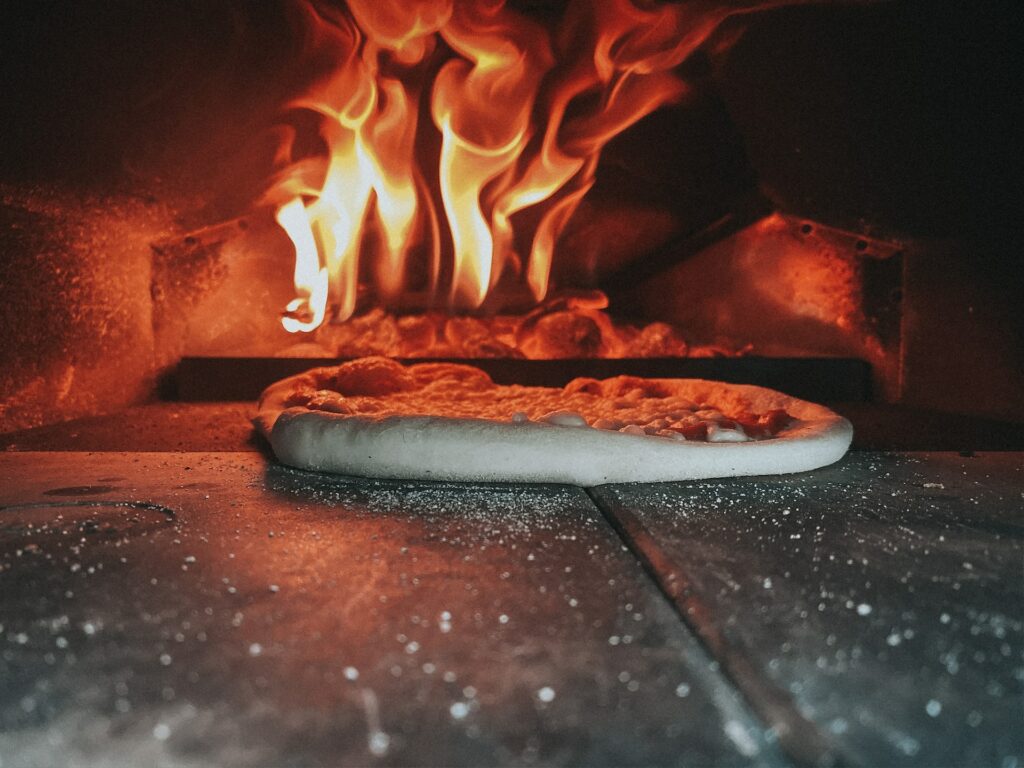
Maintaining the appropriate hot holding temperature for pizza is crucial for ensuring the safety and quality of the food. The temperature range between 40 °F and 140 °F (4 °C – 60 °C) is known as the “Danger Zone” for food, as harmful bacteria such as Salmonella and Staphylococcus grow rapidly in this range.
Therefore, pizza should be held at a minimum of 140 °F (60 °C) to prevent bacterial growth that can cause foodborne illnesses.
When pizza is cooked, it is brought to a high temperature that kills most bacteria. However, if it is not held at the proper hot holding temperature, bacteria can grow and multiply, making the pizza unsafe to eat.
This is particularly important for pizza that is left out for an extended period, such as at a buffet or during delivery.
In addition to ensuring safety, maintaining the appropriate hot holding temperature also helps to preserve the quality of the pizza. Different ingredients in a pizza have varying temperature requirements, but as a whole, the pizza should be kept at a minimum of 135°F (57°C).
This temperature ensures that common pizza components, such as cheese, meats, and sauces, remain safe for consumption and continue to retain their flavors and textures.
To ensure that pizza is safe to eat and of high quality, it is essential to follow the guidelines for hot holding temperature. Reheat food quickly, within two hours, and keep it at a minimum temperature of 140 °F (60 °C) to prevent bacterial growth and maintain the delicious taste and texture of the pizza.
Temperature Regulations for Pizza
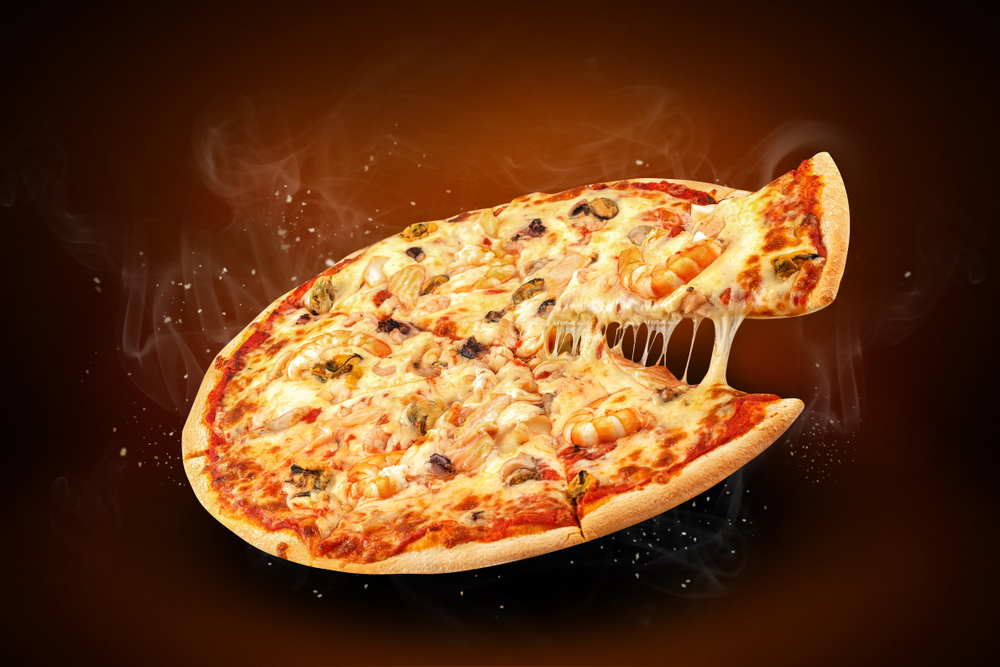
When it comes to serving pizza, it is important to follow temperature regulations to ensure food safety. The Food and Drug Administration (FDA) sets guidelines for hot holding temperatures to prevent the growth of harmful bacteria.
According to FDA regulations, the minimum hot holding temperature for pizza is 140 °F (60 °C). This temperature ensures that bacteria do not grow rapidly, keeping the pizza safe for consumption. However, the optimal hot holding temperature for serving pizza is between 145℉ and 165℉.
It is important to keep pizza above 140℉ to keep it out of the so-called “Danger Zone.” The Danger Zone is a range of temperature between 40℉ and 140℉ where bacteria can grow rapidly.
Different ingredients in a pizza have varying temperature requirements, but as a whole, your pizza should be kept at a minimum of 135°F (57°C). This temperature ensures that common pizza components, such as cheese, meats, and sauces, remain safe for consumption and continue to retain their flavors and textures.
It is essential to follow food safety regulations to prevent foodborne illnesses. Pizza and other foods should never be left out for more than two hours, even in a warmer.
If food has been cooked and properly cooled, it may be served at any temperature if it is going to be served right away. However, reheated food should be quickly reheated within two hours to ensure it is safe for consumption.
In summary, it is crucial to adhere to temperature regulations for pizza to ensure food safety. The minimum hot holding temperature for pizza is 140 °F (60 °C), but the optimal temperature for serving pizza is between 145℉ and 165℉.
Following these guidelines will help prevent the growth of harmful bacteria and keep pizza safe for consumption.
How to Measure Pizza Temperature

To ensure that pizza is safe to eat, it is important to measure its internal temperature regularly. The most accurate way to do this is by using a food thermometer. There are two types of food thermometers that can be used to measure the temperature of pizza: probe thermometers and infrared thermometers.
Probe Thermometers
Probe thermometers are the most common type of food thermometer and are used to measure the internal temperature of the pizza. To use a probe thermometer, insert the probe into the thickest part of the pizza, making sure that it does not touch any bones or the pan.
Wait for a few seconds until the temperature reading stabilizes, and then record the temperature. The minimum hot holding temperature for pizza is 140°F (60°C), so make sure that the temperature reading is at least this value.
Infrared Thermometers
Infrared thermometers are another type of food thermometer that can be used to measure the temperature of pizza. They work by measuring the infrared radiation emitted by the pizza. To use an infrared thermometer, point it at the pizza from a distance of about 1-2 inches and press the trigger.
The thermometer will display the temperature reading on its screen. Infrared thermometers are useful when measuring the temperature of pizza that is in a deep dish or has a thick crust.
Regardless of the type of thermometer used, it is important to clean and sanitize it before and after each use to prevent cross-contamination. Follow the manufacturer’s instructions for cleaning and sanitizing the thermometer.
By regularly measuring the internal temperature of pizza, it is possible to ensure that it is safe to eat and meets the minimum hot holding temperature requirement of 140°F (60°C).
Optimal Temperature for Different Pizza Ingredients

When it comes to pizza, different ingredients have varying temperature requirements. Here are the optimal temperatures for some of the most common pizza ingredients:
Cheese
Mozzarella cheese is a staple ingredient in most pizzas. To ensure the cheese retains its texture and flavor, it should be kept at a minimum of 135°F (57°C). This temperature is also sufficient to kill any harmful bacteria that may be present.
Toppings
Pizza toppings such as vegetables and tomatoes are delicate and can easily become overcooked or undercooked. The optimal temperature for these toppings is between 120°F and 130°F (49°C and 54°C).
This temperature range ensures that the toppings are cooked through but still retain their texture and flavor.
Meats
Meats such as pepperoni, sausage, and bacon should be cooked thoroughly before being added to the pizza. The optimal temperature for cooked meats is between 140°F and 160°F (60°C and 71°C).
This temperature range ensures that the meats are safe to eat and remain juicy and flavorful.
Pizza Ingredients
The overall temperature of the pizza should be at least 135°F (57°C) to ensure that all ingredients are safe to eat. However, the optimal temperature may vary depending on the thickness of the crust and the amount of cheese and toppings on the pizza.
In summary, the optimal temperature for pizza ingredients varies depending on the type of ingredient. Cheese should be kept at a minimum of 135°F (57°C), toppings at 120°F to 130°F (49°C and 54°C), and meats at 140°F to 160°F (60°C and 71°C).
The overall temperature of the pizza should be at least 135°F (57°C) to ensure that all ingredients are safe to eat.
The Danger Zone and Pizza

The Danger Zone is a temperature range between 40℉ and 140℉ where bacteria grow rapidly. Pizza, like any other food, must be kept out of the danger zone to prevent bacterial growth and ensure its safety for consumption. The minimum hot holding temperature requirement for pizza is 140 °F (60 °C) to keep it safe for consumption.
If pizza is left at room temperature for more than two hours, it can become a breeding ground for bacteria. This is why it is crucial to keep pizza at the right temperature to prevent the growth of harmful bacteria.
In the Danger Zone, the number of bacteria can double within 20 minutes, which means that if pizza is left at room temperature for an hour, the bacteria on it can multiply eight-fold.
To avoid the danger zone, pizza should be kept at a minimum temperature of 140 °F (60 °C) or higher. If pizza is to be held for more than four hours, it should be discarded. The temperature danger zone is a critical factor in food safety, and it is essential to follow the guidelines to prevent foodborne illness.
It is also important to note that different ingredients in a pizza have varying temperature requirements. Cheese, meats, and sauces should be kept at a minimum temperature of 135°F (57°C) to ensure their safety for consumption and to retain their flavors and textures.
In summary, the Danger Zone is a temperature range where bacteria grow rapidly, and pizza should be kept out of this range to prevent bacterial growth and ensure its safety for consumption.
The minimum hot holding temperature requirement for pizza is 140 °F (60 °C), and different ingredients in a pizza have varying temperature requirements. It is crucial to follow the guidelines to prevent foodborne illness.
The Role of the Oven in Maintaining Pizza Temperature
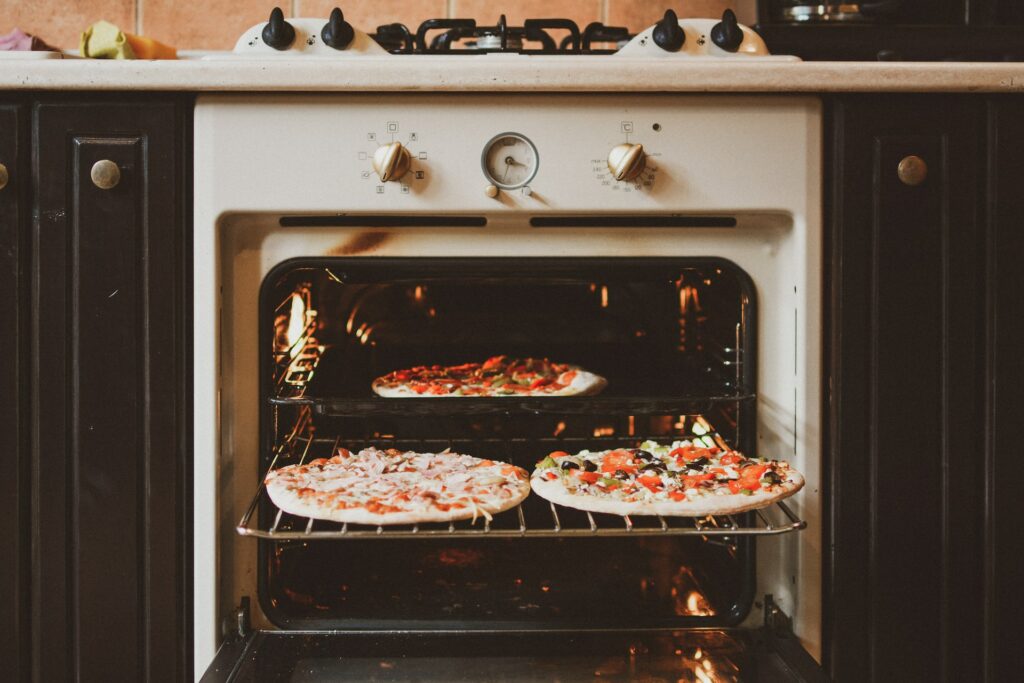
The oven plays a crucial role in maintaining the temperature of pizza. The temperature of the oven affects the cooking time and the final temperature of the pizza. Therefore, it is essential to ensure that the oven is set to the appropriate temperature before cooking the pizza.
Most pizza ovens have a temperature range of 450°F to 500°F. However, the ideal temperature for cooking pizza depends on the type of oven and the type of pizza being cooked.
For example, Neapolitan-style pizza is traditionally cooked in a wood-fired oven at a temperature of around 900°F, while New York-style pizza is cooked in a gas-fired oven at a temperature of around 550°F.
To maintain the temperature of the pizza, it is important to preheat the oven before cooking. Preheating the oven ensures that the oven reaches the desired temperature, which allows the pizza to cook evenly and thoroughly.
It is also important to monitor the temperature of the oven throughout the cooking process to ensure that the pizza is cooking at the desired temperature.
In addition to preheating the oven, it is also important to ensure that the pizza is cooked for the appropriate amount of time. Overcooking or undercooking the pizza can result in a temperature that is too hot or too cold, which can affect the taste and texture of the pizza.
Overall, the oven plays a critical role in maintaining the temperature of pizza. By preheating the oven and monitoring the temperature throughout the cooking process, it is possible to ensure that the pizza is cooked at the appropriate temperature, which results in a delicious and perfectly cooked pizza.
Reheating Pizza: Safety Measures and Considerations
When reheating pizza, it is important to follow safety measures and considerations to prevent the growth of harmful bacteria that can cause foodborne illnesses.
Pizza should never be left out at room temperature for more than two hours, as bacteria can grow rapidly in temperatures between 40 °F and 140 °F (4 °C and 60 °C).
To safely reheat pizza, the minimum hot holding temperature requirement is 140 °F (60 °C). This temperature kills off any bacteria that may have grown on the pizza while it was at room temperature. It is recommended to use a food thermometer to ensure that the pizza has reached this temperature before consuming it.
There are several methods for reheating pizza, including using an oven, stovetop, microwave, or air fryer. However, not all methods are created equal in terms of food safety. For example, reheating pizza in the oven is considered the safest method as it allows the pizza to reach the minimum hot holding temperature evenly.
On the other hand, reheating pizza in the microwave may not heat the pizza evenly, which can result in hot spots where bacteria can survive.
When reheating pizza, it is also important to consider the type of toppings on the pizza. Toppings such as meat and dairy products can be more prone to bacterial growth, so it is recommended to reheat pizza with these toppings to a higher temperature to ensure they are safe to consume.
Overall, reheating pizza requires careful consideration of safety measures to prevent the growth of harmful bacteria. By following the minimum hot holding temperature requirement and using safe reheating methods, individuals can enjoy leftover pizza without risking foodborne illness.
Hot Holding Equipment for Pizza
When it comes to keeping pizzas hot, having the right equipment is crucial. Hot holding equipment is designed to maintain the temperature of food items at a safe level, preventing bacterial growth and ensuring that the food is safe to eat.
Here are some types of hot holding equipment that are commonly used for pizzas:
Food Warmers
Food warmers are a type of hot holding equipment that use a heating element to keep food at a consistent temperature. They come in a variety of shapes and sizes, and can be used to keep pizzas hot for extended periods of time.
Food warmers are often used in buffet-style settings, where pizzas need to be kept hot and fresh for customers to serve themselves.
Pizza Warmers
Pizza warmers are specifically designed to keep pizzas hot and fresh. They come in a variety of sizes, and can hold multiple pizzas at once. Pizza warmers use a combination of heat and humidity to keep pizzas at the right temperature and prevent them from drying out.
Warming Cabinets
Warming cabinets are a type of hot holding equipment that are commonly used in commercial kitchens. They are designed to keep food at a consistent temperature, and can be used to hold pizzas for extended periods of time. Warming cabinets come in a variety of sizes, and can be used to hold multiple pizzas at once.
Steam Tables
Steam tables are another type of hot holding equipment that can be used to keep pizzas hot. They use steam to keep food at a consistent temperature, and are often used in buffet-style settings. Steam tables come in a variety of sizes, and can be used to hold multiple pizzas at once.
Overall, having the right hot holding equipment is essential for keeping pizzas hot and fresh. Whether you’re running a pizzeria or serving pizza at a buffet, investing in quality hot holding equipment can help ensure that your pizzas are safe and delicious.
Impact of Temperature on Pizza Quality
Maintaining the right temperature is crucial for keeping pizza safe to eat and preserving its quality. The temperature at which pizza is held can affect its texture, taste, and overall appeal.
If pizza is held at a temperature that is too low, it can become soggy and lose its crispiness, making it less appealing to customers. On the other hand, if it is held at a temperature that is too high, it can dry out and lose its flavor.
One of the most important factors that affect pizza quality is the temperature of the pizza dough. Pizza dough contains yeast, which ferments and causes the dough to rise. This process happens best at slightly warm temperatures (around 80-90°F or 27-32°C). However, once the dough is baked, it needs to be kept above 135°F (57°C) to remain safe to eat. Lower temperatures can encourage bacterial growth.
The sauce is another element of pizza that can be affected by temperature. If the sauce is too hot, it can cause the cheese to melt too quickly, resulting in a soggy pizza. If the sauce is too cold, it can cause the pizza to be dry and unappetizing.
The cheese and toppings on pizza also need to be held at the right temperature to maintain their flavor and texture. Cheese that is held at a temperature that is too low can become hard and lose its flavor. Toppings that are held at a temperature that is too high can become overcooked and lose their texture.
In summary, the minimum hot holding temperature for pizza is 140°F (60°C). However, maintaining the right temperature for each component of the pizza is equally important for ensuring that the pizza is safe and tasty.
Health Risks Associated with Improper Pizza Temperature
Keeping pizza at the right temperature is essential for preventing the growth of harmful bacteria. When pizza is not held at the right temperature, bacteria can start growing, leading to unsafe food that can cause illnesses due to cross-contamination from other ingredients or utensils used during cooking.
The two primary bacteria that can grow on pizza held at improper temperatures are Salmonella and Staphylococcus. These bacteria can cause severe food poisoning, leading to symptoms such as nausea, vomiting, diarrhea, and abdominal cramps. In severe cases, they can even cause hospitalization and death.
It is essential to note that the temperature range between 40 °F and 140 °F (4 °C – 60 °C) is referred to as the “Danger Zone” for food. This range of temperature is where bacteria grow most rapidly, and it is where most foodborne illnesses occur.
Therefore, it is crucial to hold pizza at a minimum temperature of 140°F (60°C) to prevent the growth of harmful bacteria. Caution should be taken to ensure that the pizza is held at this temperature until it is ready to be served.
Consumers should also be cautious when consuming pizza that has been held at an improper temperature. If the pizza has been sitting out at room temperature for more than two hours, it is best to discard it. It is also essential to reheat pizza to an internal temperature of 165°F (74°C) before consuming it.
In summary, holding pizza at the right temperature is critical for preventing the growth of harmful bacteria such as Salmonella and Staphylococcus. It is essential to keep pizza at a minimum temperature of 140°F (60°C) until it is ready to be served and to discard any pizza that has been sitting out at room temperature for more than two hours.
Maintaining Moisture and Higher Temperature
To keep pizza safe and delicious, it is important to maintain a minimum hot holding temperature of 140°F (60°C). However, it is equally important to maintain moisture and higher temperature to ensure the pizza remains fresh and tasty.
One way to maintain moisture is by using a pizza stone or a preheated baking sheet. This helps to absorb excess moisture from the dough and toppings, resulting in a crispier crust and a more evenly cooked pizza. Additionally, covering the pizza with a lid or foil while it is being heated can help to trap moisture and prevent the pizza from drying out.
To maintain a higher temperature, it is recommended to use a pizza warmer or a pizza oven. These appliances are specifically designed to keep pizzas at a consistent temperature, ensuring that they remain hot and fresh. It is important to note that different ingredients in a pizza have varying temperature requirements.
For example, meats and cheeses may need to be heated to a higher temperature than vegetables and sauces to ensure that they are cooked through and safe to eat.
In summary, maintaining moisture and higher temperature is crucial to keeping pizza fresh and delicious. Using a pizza stone or preheated baking sheet, covering the pizza while heating, and using a pizza warmer or oven can all help achieve this goal. By following these guidelines, pizza lovers can enjoy a safe and satisfying meal every time.
Also, read: How to Make Tandoori Naan Pizza
Frequently Asked Questions
What is the minimum temperature for hot holding food?
The minimum temperature for hot holding food is 135°F (57°C). This temperature must be maintained to prevent the growth of bacteria that may lead to foodborne illnesses.
What is the minimum hot holding temperature requirement for baked potatoes?
The minimum hot holding temperature requirement for baked potatoes is 140°F (60°C). This temperature must be maintained to prevent the growth of bacteria that may lead to foodborne illnesses.
What is the minimum hot holding temperature for hot dogs?
The minimum hot holding temperature for hot dogs is 140°F (60°C). This temperature must be maintained to prevent the growth of bacteria that may lead to foodborne illnesses.
What is the minimum hot holding temperature for pasta with alfredo sauce?
The minimum hot holding temperature for pasta with alfredo sauce is 140°F (60°C). This temperature must be maintained to prevent the growth of bacteria that may lead to foodborne illnesses.
What is the minimum hot holding temperature for green bean casserole?
The minimum hot holding temperature for green bean casserole is 140°F (60°C). This temperature must be maintained to prevent the growth of bacteria that may lead to foodborne illnesses.
To what minimum temperature should food that is cooked, cooled and reheated for hot holding?
Food that is cooked, cooled and reheated for hot holding should be reheated to a minimum temperature of 165°F (74°C) for 15 seconds. This temperature must be maintained to prevent the growth of bacteria that may lead to foodborne illnesses.



